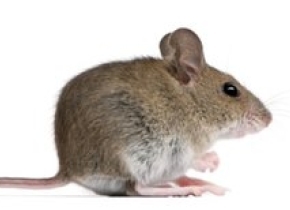

被困在纽约市公寓楼的老鼠携带有致病细菌和抗生素抗性基因。
撰文\播音:克里斯托弗·因塔利亚塔(Christopher Intagliata)
翻译:邱燕宁
审校:杨枭
Rats. They’re a defining feature of life in New York City, rustling in trash bags, scurrying along the subway tracks—and becoming famous for occasionally eating pizza. But these urban vermin may be less of a threat to human health than their smaller, cuter cousins—the city’s mice.
老鼠是纽约市的典型生物,它们在垃圾袋里发出沙沙声,在地铁轨道上奔驰,并因偶尔吃披萨臭名昭著。但是,这些城市害虫对人类健康的威胁可能不如其小而可爱的表兄弟——城市里的小家鼠。
"They're in your buildings, and they get into your kitchen cupboards, and they get behind refrigerators. So they have a real potential to contaminate the environment that you actually live in."
“它们生活你的住宅楼里,它们溜进你的厨房碗柜,躲在冰箱后面。它们有可能污染你所居住的环境。”
Simon Williams is a microbiologist at Columbia University and the University of Western Australia. He and his colleagues trapped more than 400 mice in apartment building basements in Manhattan, Queens, Brooklyn and the Bronx. They took swabs of the mice's rear ends, gathered feces from the traps, and subjected both to a battery of genetic tests.
西蒙·威廉姆斯(Simon Williams)是哥伦比亚大学和西澳大利亚大学的微生物学家。他和他的同事们在曼哈顿区、皇后区、布鲁克林区和布朗克斯区的公寓地下室里捕捉了400多只老鼠。他们采集了老鼠的尾巴毛,从陷阱中收集了老鼠粪便,并进行了一系列的基因测试。
The mice harbored an array of disease-causing bacteria, like shigella, Clostridium difficile, salmonella. They also carried a suite of antibiotic-resistance genes, and viruses associated with insects, dogs, chickens and pigs. Mice from a Chelsea apartment building had the most pig virus—perhaps, the scientists say, because they live near the Meatpacking District, which used to have pork processing facilities before fashionable nightclubs took over.
小鼠携带一系列致病细菌,如志贺氏菌,艰难梭菌,沙门氏菌。他们还携带了一套抗生素抗性基因,以及与昆虫、狗、鸡和猪有关的病毒。科学家说,切尔西公寓楼里的小鼠携带的猪病毒数量最多,可能是因为他们住在肉类加工的区域附近,这个地区在被时尚夜总会接手之前是进行猪肉加工的地方。
The details are in the journal mBio.
更多细节发表在期刊mBio上。
The mere fact that these microbes can be found in poop, though, isn't cause for immediate alarm. "You know we're not saying these bugs are all out to get us. We're just finding the genetic footprint. They're indicators, but we're not saying they're necessarily out there and there's a huge problem. So keep calm, in terms of the public health response."
尽管在粪便中发现了这些微生物,但这并不需要立即触发警告。“这并不是说这些病原体会接触到我们,我们只是找到了它们的遗传足迹。它们只是生物指标,但并不是说它们必然存在于那里,且会引发巨大的问题。所以就公共卫生应对措施而言,我们可以保持冷静。”
Further work might tease out whether there's transmission of bacteria between mice feces and humans. Until then, there are plenty of other New Yorkers to investigate.
进一步的工作可能会弄清楚老鼠粪便和人类之间是否存在细菌传播。 在此之前,纽约还有很多其他的生物需要被调查。
"Cockroach would be an amazing one to go onto next. I think they have real potential."
“蟑螂将是下一个惊人的目标,而且我认为他们有很大的可能性(携带病原体)。”
—Christopher Intagliata
 京公网安备11010502039775号
京公网安备11010502039775号